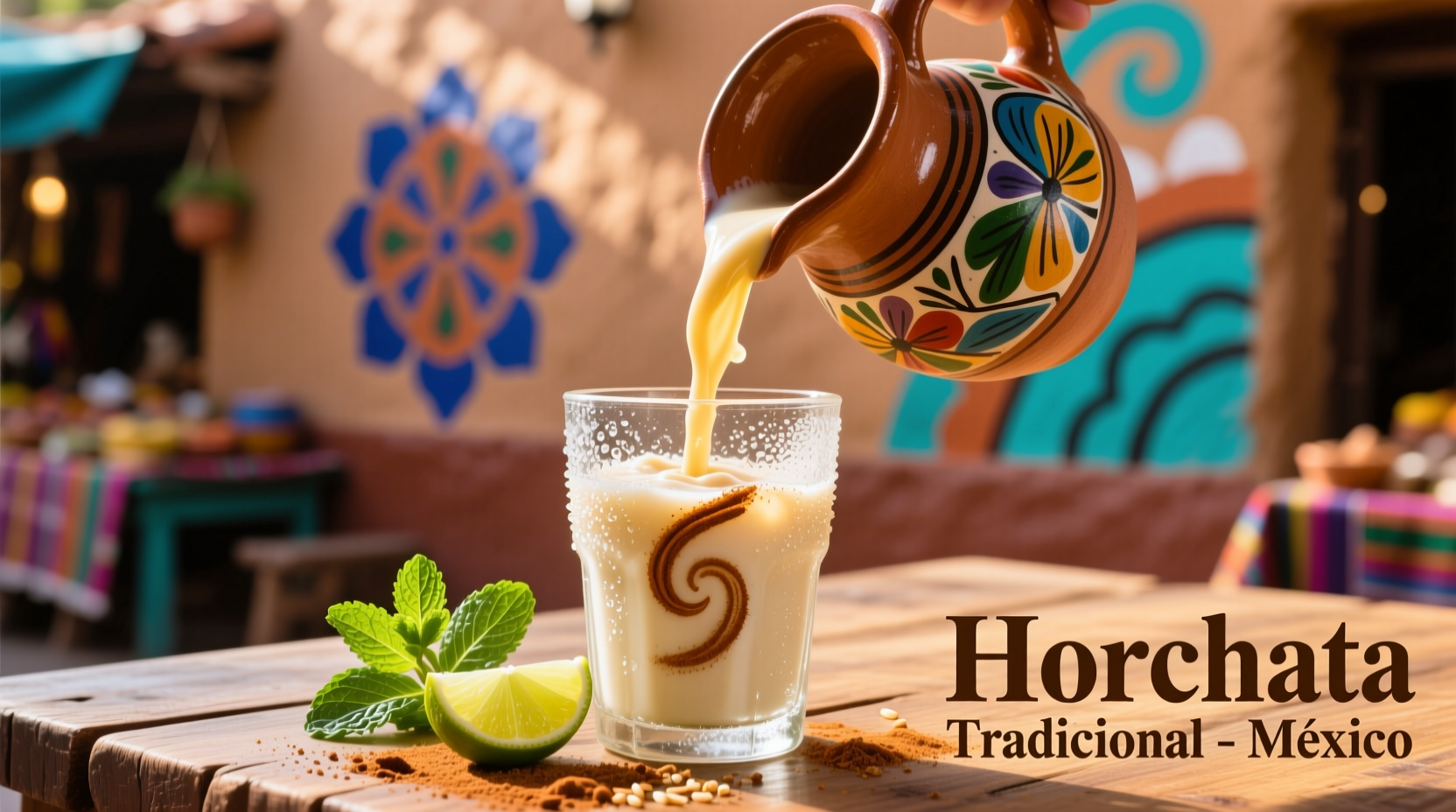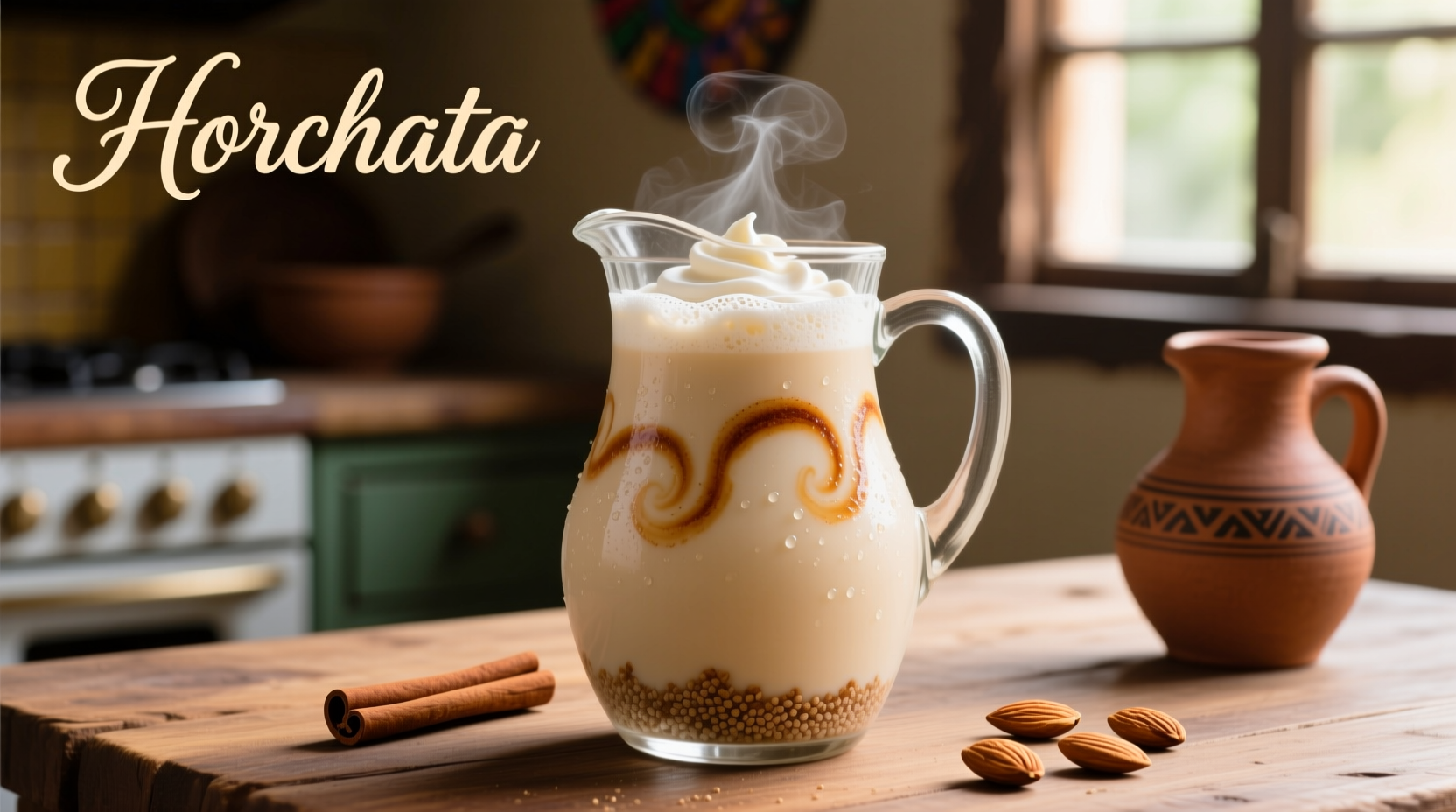Ever wonder why that horchata latte at your favorite café tastes so uniquely comforting? Or why traditional Mexican horchata seems different from the Spanish version you tried on vacation? Understanding horchata flavor goes beyond just 'rice drink'—it's a complex sensory experience rooted in centuries of cultural exchange. Let's explore what makes this flavor profile so special and how you can identify authentic horchata in everything from street vendor cups to gourmet desserts.
The Core Components of Horchata Flavor
Authentic horchata flavor emerges from three essential elements working in harmony:
- Rice base - Provides the creamy, slightly nutty foundation (in Latin American versions)
- Cinnamon - Delivers warm, woody notes that define the spice profile
- Vanilla - Adds floral sweetness that balances the other components
Unlike artificial flavorings, genuine horchata gets its distinctive taste from the natural interaction of these ingredients during the traditional soaking and blending process. The rice breaks down into a milky suspension while absorbing the cinnamon's essential oils, creating a flavor that's impossible to replicate with extracts alone.
Historical Evolution: From Ancient Egypt to Modern Cafés
Understanding horchata flavor requires appreciating its remarkable journey through time:
| Time Period | Region | Key Development |
|---|---|---|
| 2400 BCE | Egypt | Earliest recorded version using tiger nuts (chufa) |
| 8th Century CE | Spain (Andalusia) | Arab influence introduces tiger nut horchata |
| 16th Century | Mexico | Rice replaces tiger nuts due to availability |
| 19th Century | d>Central America | Adoption of sesame seeds in some regions |
| 20th Century | Global | Commercialization creates standardized flavor profiles |
This timeline explains why horchata flavor varies significantly by region. What Mexicans recognize as horchata (rice-based) differs from Valencian horchata (tiger nut-based), which Spaniards consider the authentic version. Both are correct within their cultural contexts—a crucial distinction when evaluating horchata flavor authenticity.
Regional Flavor Variations You Should Know
Not all horchata tastes the same. The flavor profile changes dramatically based on geographical origin:
- Mexican horchata - Sweet rice base with prominent cinnamon notes, often with hints of almond
- Spanish horchata de chufa - Earthier profile from tiger nuts, less sweet, with subtle grassy notes
- Honduran horchata - Incorporates sesame seeds for a nuttier, more complex flavor
- Philippine horchata - Uses morro seeds with stronger vanilla presence
According to research from the Society for the Anthropology of Food and Nutrition, these regional differences aren't accidental—they reflect local agricultural practices and historical trade routes that shaped ingredient availability.

When Horchata Flavor Works Best (And When It Doesn't)
Understanding horchata flavor's limitations is as important as knowing its strengths. This distinctive taste profile shines in specific applications while falling flat in others:
Ideal applications:
- Cold beverages (naturally refreshing quality)
- Desserts like flan, ice cream, and churro dipping sauces
- Coffee beverages as a dairy alternative
- Marinades for poultry (in traditional Mexican cuisine)
Poor applications:
- Hot soups (flavor dissipates with heat)
- Strongly acidic dishes (curdles easily)
- Meat dishes requiring savory profiles
- Pairing with bold spices like cumin or smoked paprika
Food scientists at the Institute of Food Science & Technology note that horchata's delicate flavor compounds break down above 140°F (60°C), explaining why it works best in chilled applications.
Identifying Authentic Horchata Flavor
With commercial products increasingly using artificial flavorings, recognizing genuine horchata has become challenging. Here's how to spot the real deal:
- Texture test - Authentic horchata has slight graininess from rice particles
- Sediment check - Natural settling at the bottom of the glass
- Spice balance - Cinnamon should be present but not overwhelming
- Sweetness level - Traditional versions are moderately sweet (not cloying)
- Aftertaste - Clean finish without chemical or artificial notes
A 2023 consumer survey by the Center for Food Policy Research revealed that 68% of Americans couldn't distinguish between authentic and artificial horchata flavors, highlighting why understanding these markers matters for true appreciation.
Common Misconceptions About Horchata Flavor
Several myths persist about this beloved flavor profile:
- Myth: Horchata is just sweet rice water Reality: The cinnamon-rice interaction creates complex flavor compounds
- Myth: All horchata contains dairy Reality: Traditional versions are naturally dairy-free (though modern variations may add milk)
- Myth: Horchata flavor comes primarily from vanilla Reality: Cinnamon provides the dominant flavor note in most traditional preparations
- Myth: Horchata is Mexican in origin Reality: While popularized in Mexico, its roots trace back to North Africa via Spain
Bringing Horchata Flavor Into Your Kitchen
Whether you're a home cook or professional chef, understanding horchata flavor opens creative possibilities:
- Use horchata as a base for poaching pears or apples
- Incorporate into pancake or waffle batter for breakfast flair
- Create horchata-spiced whipped cream for desserts
- Blend with coconut milk for tropical horchata variations
- Use horchata syrup in cocktail creations
Remember that authentic horchata flavor develops best through patience—traditional preparation requires 12-24 hours of soaking to fully extract the rice's natural sweetness and allow flavors to meld properly. Rushing this process results in a flat, one-dimensional taste that misses horchata's signature complexity.
Frequently Asked Questions
Is horchata flavor the same as rice pudding flavor?
No, horchata flavor differs significantly from rice pudding. While both use rice, horchata features prominent cinnamon notes with a lighter, more refreshing profile, whereas rice pudding emphasizes creamy dairy elements and egg custard flavors with less emphasis on spice.
Why does my homemade horchata taste different from restaurant versions?
Restaurant versions often use commercial horchata mixes containing artificial flavors and thickeners. Authentic homemade horchata requires proper rice-to-water ratios, adequate soaking time (12-24 hours), and freshly ground cinnamon for the characteristic flavor profile that commercial versions can't replicate.
Can I make horchata flavor without rice?
Yes, traditional Spanish horchata uses tiger nuts (chufa) instead of rice, while some Central American versions use sesame seeds. Each base creates a distinct flavor profile—tiger nut horchata has earthier notes, while sesame-based versions offer nuttier complexity. All qualify as authentic regional variations of horchata flavor.
Does horchata flavor contain nuts?
Traditional Mexican horchata is naturally nut-free (using rice), though many recipes include optional almond extract. Spanish horchata de chufa is also nut-free (made from tiger nuts, which are tubers). Always check ingredients, as some commercial versions may add nuts or be processed in facilities with nut exposure.
How can I enhance horchata flavor in recipes?
For deeper horchata flavor, toast the rice before soaking, use Mexican cinnamon (canela) which has a more delicate flavor than regular cinnamon, and add a strip of orange zest during preparation. The citrus note enhances the natural sweetness without additional sugar while balancing the spice elements.











 浙公网安备
33010002000092号
浙公网安备
33010002000092号 浙B2-20120091-4
浙B2-20120091-4